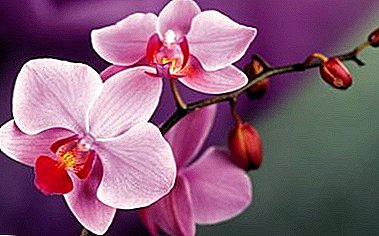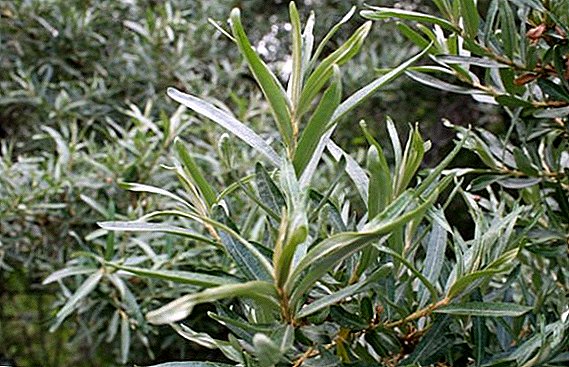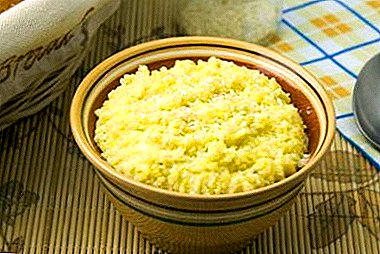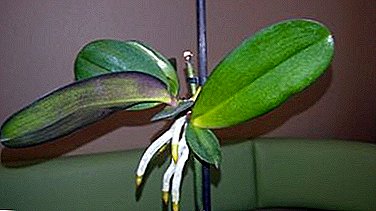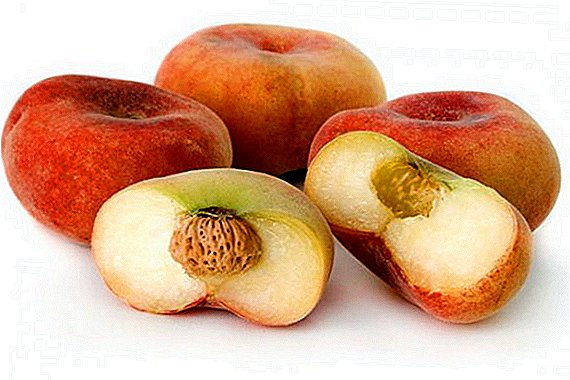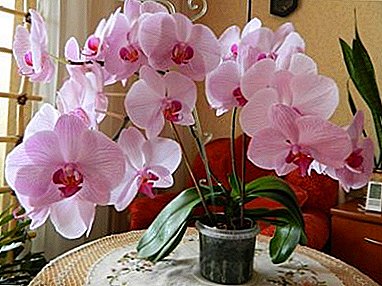
Not only beginners, but also experienced flower lovers sometimes wonder: Does an orchid grow in ordinary soil? In various forums, there are often notes that the plant feels great in black soil. To understand this issue, you need to understand that orchids have a huge number of varieties.
In the wild nature, flowers of different varieties grow on trees, stones, specific soil. Therefore, for planting and growing at home, an important factor is the appearance of your pet.
Is it possible to plant a plant in simple soil?
Consider whether home orchid can be planted in ordinary land.
Conventionally, orchids can be divided into three groups:
- Epiphytes - the most common group. The roots of these plants do not need land. Nutrients are taken from the air. In the wild, they prefer to choose other plants as their “home”. Accordingly, not adapted to life in the soil.
- Lithophytes - a small group growing on stones. This species prefers to grow on the rocks.
- Ground Orchids - These flowers have underground tubers and roots. Therefore, they can take root in the usual soil, unlike the two previous varieties.
Land varieties include Bletilla striata, Pleione, Orchis and Cypripedium. They grow beautifully in a moderate band, although not as beautiful and original as their exotic relatives.
Currently Many hybrids have been developed that adapt perfectly to the conditions of the apartment and to the ground. Among them are varieties such as:
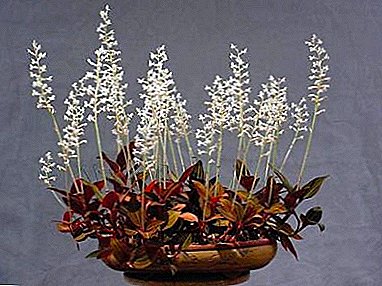 Hemorrhagus;
Hemorrhagus;- Macodes;
- Anecochilus;
- Goodyear
There are wild orchids growing on the territory of Russia, Ukraine, Belarus. Land for such colors is quite familiar.
Among them are plants such as:
- Limodorum;
- Orchis;
- Ofris;
- Lyubka;
- Pyltsegolovnik;
- Anacamptis;
- Palmatoric root;
- Lady's slipper.
Why is it contraindicated for most species?
Most orchids are not suitable for planting in heavy ground. This is due to the peculiarities of plant nutrition. So, the usual indoor flower absorbs nutrients from moisture, which is contained in the ground. An orchid, if it belongs to a group of epiphytes or lithophytes, simply cannot eat if the roots are under the layer of the earth, even if it is very thin. Plant roots of these species need free access of air and sunlight.
How can black soil affect some varieties?
Orchids belonging to the group of epiphytes include the most common varieties: phalaenopsis, wanda, dendrobium, aerangis, and so on. Landing in the black earth for these plants will be disastrous. They will not be able to absorb nutrients from the environment, therefore, nutrition will cease. Roots will not get the required amount of sunlight. If the plant is not moved to the ground, which will provide free access of air, it will wait for an emergency death.
How to find out what sort of flower?
 Both a novice and an experienced florist need to find out to which variety the newly acquired orchid belongs. This is very important, since under the name Orchid, there are plants that are completely different from each other. This applies to both appearance and growing conditions.
Both a novice and an experienced florist need to find out to which variety the newly acquired orchid belongs. This is very important, since under the name Orchid, there are plants that are completely different from each other. This applies to both appearance and growing conditions.
If the plant was bought in a specialty store, then the label will contain the corresponding inscription.
Another thing, when the label is missing or the flower came to the owner in another way. In this case, you must resort to using encyclopedic materials, or refer to Internet resources. On sites that are devoted to floriculture, you can find any kind of orchids, their image, as well as tips on planting and cultivation.
Do I need to add soil to the soil?
Depending on the type of plant you need to choose the appropriate soil. If the flower is not adapted for cultivation in ordinary land, then the soil should include moss, pine bark, charcoal. Use of leafy ground is possible. But you should not abuse it. Orchid may not like it.
Important! When experimenting with mixtures for preparing the substrate, the main thing is to keep the proportions.
Substrate preparation for cultivation
If the orchid is suitable for cultivation in ordinary soil, it is possible to prepare the mixture yourself. The fact is that in ordinary stores it is impossible to find a special ground for ground orchids. You can offer a substrate for growing violets, but it is not suitable for growing orchids.
Conditionally We can distinguish three components for the preparation of the soil, in which you can plant orchids:
- Land basis (leaf, sod or coniferous land, peat).
- Loosening elements (moss, coal, foam, tree bark).
- Organic fertilizer.
Landing instructions
Before you plant a flower in a permanent place, you need to decide whether it requires annual transplantation or not. From this depends on the composition of the soil. Those plants that require an annual transplant will feel good in light ground consisting of leafy soil, humus, peat and river sand.
 Evergreens, that is, those that do not require transplants, can grow in the soil containing soddy earth, rotted leaves, sphagnum, fern roots. After the earth for the flower is ready, you must perform the following steps:
Evergreens, that is, those that do not require transplants, can grow in the soil containing soddy earth, rotted leaves, sphagnum, fern roots. After the earth for the flower is ready, you must perform the following steps:
- Choosing a pot. For ground varieties of orchids, a transparent pot is not required. The material is also not critical: you can use both plastic and ceramic containers. An oversized pot is also not welcome. It is necessary to dwell on one in which the roots of a plant will easily enter. Otherwise, flowering will have to wait a long time.
Recommendation. When planting a flower, be sure to make holes in the bottom of the pot. If they are not, then excess moisture will accumulate in the ground. Thus, the plant may rot.
- Making drainage. Expanded clay, broken brick, fine crushed stone and even foam plastic are well suited for this. Drainage should be high enough.
- Remove the plant from the previous pot. This should be done very carefully, otherwise there is a risk of damage to the roots. It is best to cut or slowly split the pot.
- After the plant is free, you need to wash the roots and carefully inspect. They should not be damaged, otherwise the flower will not transfer the transplant. You need to make sure that the roots are alive - with gentle pressure they will be elastic, not lethargic.
- Thereafter Orchid planted in a new pot. No need to deeply immerse the roots, they must breathe.
Ramming the ground after landing is not worth it. It will become dense with further watering.
Watering should be carried out only on the third day after disembarkation. In the future, the plant should be watered as needed, focusing on the humidity of the earth.
If everything was done correctly and there was no confusion with the variety of the plant, the ground orchid will please the owners with a long and abundant flowering.
Observing such simple rules and possessing the necessary skills, you can get a wonderful flower. It is important to remember that You can achieve positive results with the help of attention and timely care of the plant.


 Hemorrhagus;
Hemorrhagus;
